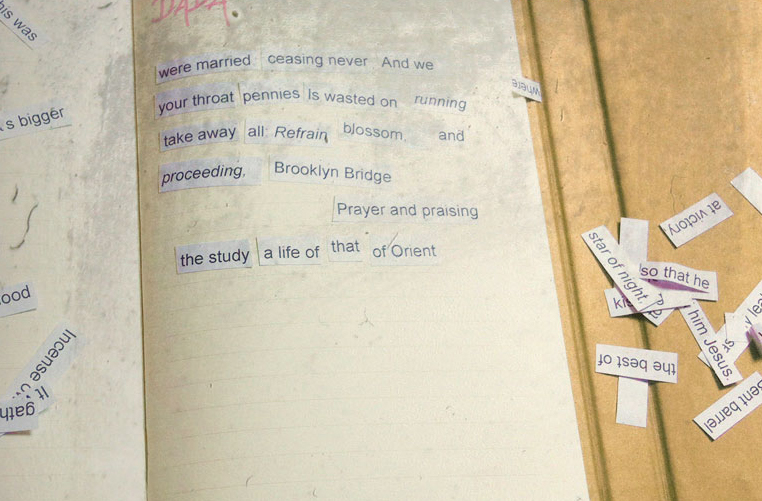
                                
|
|
Dada Literature
What?
The original intention of Dadaism is to reject norms and standards. It is the display of the absurd in an attempt to spark a different perspective.
When?
Dadaism is an excellent tool for freeing up your mind, discovering interesting prompts and ideas. It's an excellent way to spark ideas and get inspired when you have a creative block.
How?
 Define a topic that you're interested in.
Define a topic that you're interested in.
 Pick 2 or 3 different resources that are related to your topic. It could be a printed article, a magazine, an old book that you don't use anymore, or even printed slides from a course.'
Pick 2 or 3 different resources that are related to your topic. It could be a printed article, a magazine, an old book that you don't use anymore, or even printed slides from a course.'
 Cut out individual words and short phrases from each resource.
Cut out individual words and short phrases from each resource.
 Put the cut words into a bowl or a bag and shuffle them.
Put the cut words into a bowl or a bag and shuffle them.
 take a paper or a notebook and paste the words in a random way, but still in a way that makes sense
take a paper or a notebook and paste the words in a random way, but still in a way that makes sense
 Let it dry.
Let it dry.
 Take some time to reflect on what comes out from it.
Take some time to reflect on what comes out from it.
 You can repeat this exercice as many times as desired
You can repeat this exercice as many times as desired
Keywords
|
Probe |
Input |
Personnal |
Immersion |
User |
Research |
Private |
Daily |
|---|
